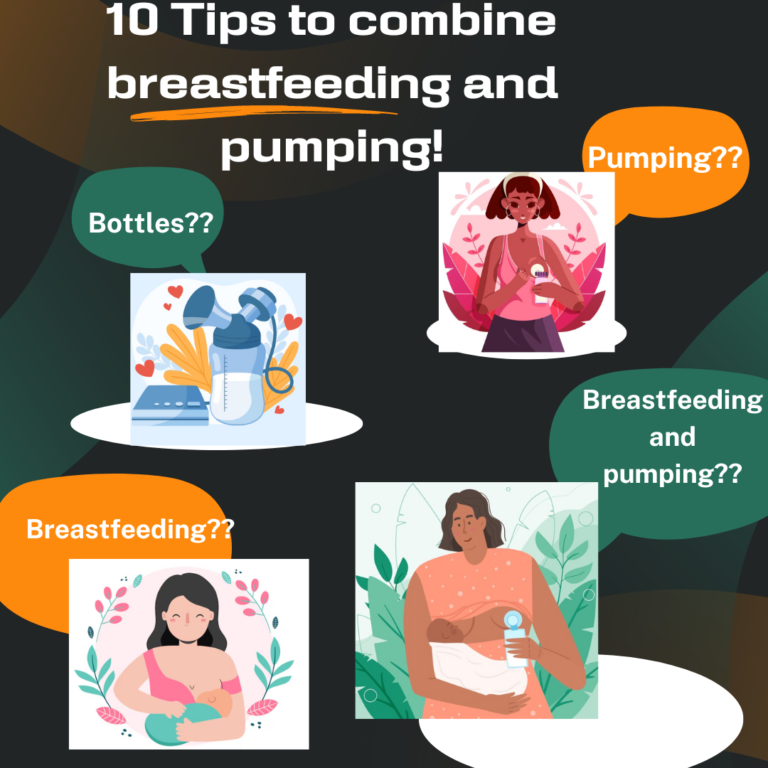Cradled in Love: The Heartfelt Connection of “Upright Breastfeeding Positions”
Breastfeeding is not only a crucial aspect of a newborn’s nourishment but also a special bonding experience between a mother and her baby. As a new mom, you may wonder about the best breastfeeding positions that promote a comfortable latch and foster a strong emotional connection with your little one. One of the lesser-known yet highly effective approaches is the upright breastfeeding position.

In this article, we’ll explore the benefits of this technique and provide helpful tips for mastering it with ease.
Upright Breastfeeding Positions
Breastfeeding is a beautiful journey that goes beyond providing essential nutrients to your newborn; it’s a moment of profound connection and love. One approach that can enhance this special experience is practicing upright breastfeeding positions. In this guide, we’ll explore the benefits of upright nursing and introduce you to some popular positions that can make feeding time more comfortable for both you and your baby.
Benefits of Upright Breastfeeding
Upright breastfeeding positions offer a plethora of advantages that go beyond the traditional nursing methods. As a new mother, understanding the benefits of these positions can greatly enhance your breastfeeding journey, fostering a deeper connection with your newborn and promoting a more comfortable feeding experience. In this article, we will explore the numerous benefits of upright breastfeeding, shedding light on how this approach can positively impact both you and your baby.

Let’s delve into the advantages that await as you embrace these nurturing positions:
- Improved Digestion: Upright breastfeeding allows gravity to assist in the natural flow of milk into your baby’s stomach, reducing the risk of reflux or colic issues.
- Better Latch: This position can encourage a better latch, making it easier for your baby to nurse effectively and minimising discomfort for you.
- Less Strain on Mom: Upright breastfeeding promotes a more natural alignment of your baby’s mouth and throat, easing the strain on your back, neck, and shoulders during feeding.
- Enhanced Bonding: The close eye contact and physical connection during upright nursing create a stronger emotional bond between you and your little one.
Upright Breastfeeding Positions
Upright breastfeeding positions have gained popularity among new mothers as an alternative approach to traditional nursing methods. These positions involve holding the baby in an upright position against the mother’s chest during feeding, offering a range of benefits for both the baby and the mother.
The Cradle Hold Variation
Instead of the traditional cradle hold where your baby lies horizontally across your body, modify it slightly by allowing your baby’s head to rest against your chest. Use one arm to support their back while your other hand guides them to latch onto the breast.
The Koala Hold
Imagine your baby clinging to you like a koala as you sit in an upright position. Your baby’s chest will be against yours, and their legs can be wrapped around your waist. Support your baby’s neck and shoulders with one hand while using the other to cradle your breast.
The Straddle Hold
This position is ideal for older babies who have more head and neck control. Place your baby astride your thigh, with their legs straddling your waist. Support their back with one hand and guide them to latch with the other.
The Side-Lying Latch
For a more relaxed feeding position, lie down on your side and bring your baby close to your breast, so they can latch while both of you are lying on your sides. This position can be especially useful during night feedings.
Tips for Success
Embarking on the journey of breastfeeding can be both exciting and challenging for new mothers. As you navigate through the world of nursing, acquiring valuable tips and strategies can make a significant difference in your breastfeeding success. In this section, we will provide you with essential tips for success, gathered from experienced mothers and healthcare professionals, to empower you with the knowledge and confidence you need to overcome potential hurdles and create a rewarding breastfeeding experience for you and your baby.
- Experiment and Adjust: Every baby is different, so don’t hesitate to try different positions to find the one that works best for you and your little one.
- Get Comfortable: Use pillows or cushions to support your back and arms during feeding, ensuring a relaxed and comfortable nursing session.
- Seek Support: If you’re having difficulty with upright breastfeeding, consider consulting a lactation consultant or a healthcare professional for guidance.
- Enjoy the Moment: Upright breastfeeding offers a unique opportunity to connect emotionally with your baby. Cherish these moments of intimacy and love.
When to consult a doctor?
Consulting a doctor is crucial during various stages of your baby’s development and your breastfeeding journey. Here are some instances when it’s important to seek medical advice:
- Feeding Difficulties: If you notice persistent feeding difficulties, such as poor latch, frequent fussiness, or your baby not gaining weight adequately, consult a doctor or a lactation consultant for guidance.
- Low Milk Supply: If you suspect that you have a low milk supply or are struggling to meet your baby’s nutritional needs, seeking medical advice can help identify underlying issues and provide appropriate solutions.
- Painful Breastfeeding: If you experience persistent nipple pain, engorgement, or signs of mastitis (such as redness, swelling, and fever), consult a healthcare professional for evaluation and management.
- Baby’s Health Concerns: If your baby shows signs of illness, such as fever, diarrhea, or unusual changes in behavior, contact a doctor promptly to ensure proper diagnosis and treatment.
- Engorgement or Blocked Ducts: If you have persistent engorgement or blocked milk ducts, a healthcare professional can offer strategies to relieve discomfort and prevent complications like mastitis.
- Concerns About Medications: If you are taking any medications while breastfeeding and have concerns about their safety, consult a doctor to discuss the potential risks and benefits.
- Baby’s Developmental Milestones: Regularly scheduled well-baby checkups with a pediatrician are essential to monitor your baby’s growth, development, and overall health.
- Mental Health Issues: If you experience symptoms of postpartum depression or anxiety, don’t hesitate to seek support from a healthcare provider or mental health professional.
Remember, it’s always better to seek medical advice whenever you have concerns about your baby’s health or your breastfeeding experience. Prompt attention and guidance can help address issues early on and ensure a positive and healthy journey for both you and your baby.
Conclusion
In conclusion, upright breastfeeding positions provide a myriad of benefits for both you and your baby. Embrace the opportunity to bond with your little one while nourishing them in a comfortable and relaxed manner. Remember, breastfeeding is a learning experience for both you and your baby, so be patient and enjoy this precious time together. Happy nursing!
Frequently asked question’s
Q: What are the best upright breastfeeding positions for newborns?
Some popular upright breastfeeding positions include the Cradle Hold Variation, the Koala Hold, and the Straddle Hold. Each position offers unique benefits and comfort for both mother and baby.
Q: How can I improve the latch while using upright breastfeeding positions?
To improve the latch, ensure your baby’s mouth is wide open before guiding them to latch onto the breast. Supporting their head and neck during the process can help achieve a deeper and more effective latch.
Q: Can upright breastfeeding help with issues like reflux and colic?
Yes, upright breastfeeding positions can be beneficial for babies with reflux or colic issues. The upright position allows gravity to assist in the digestion process and reduces the likelihood of discomfort caused by regurgitation.












+ There are no comments
Add yours